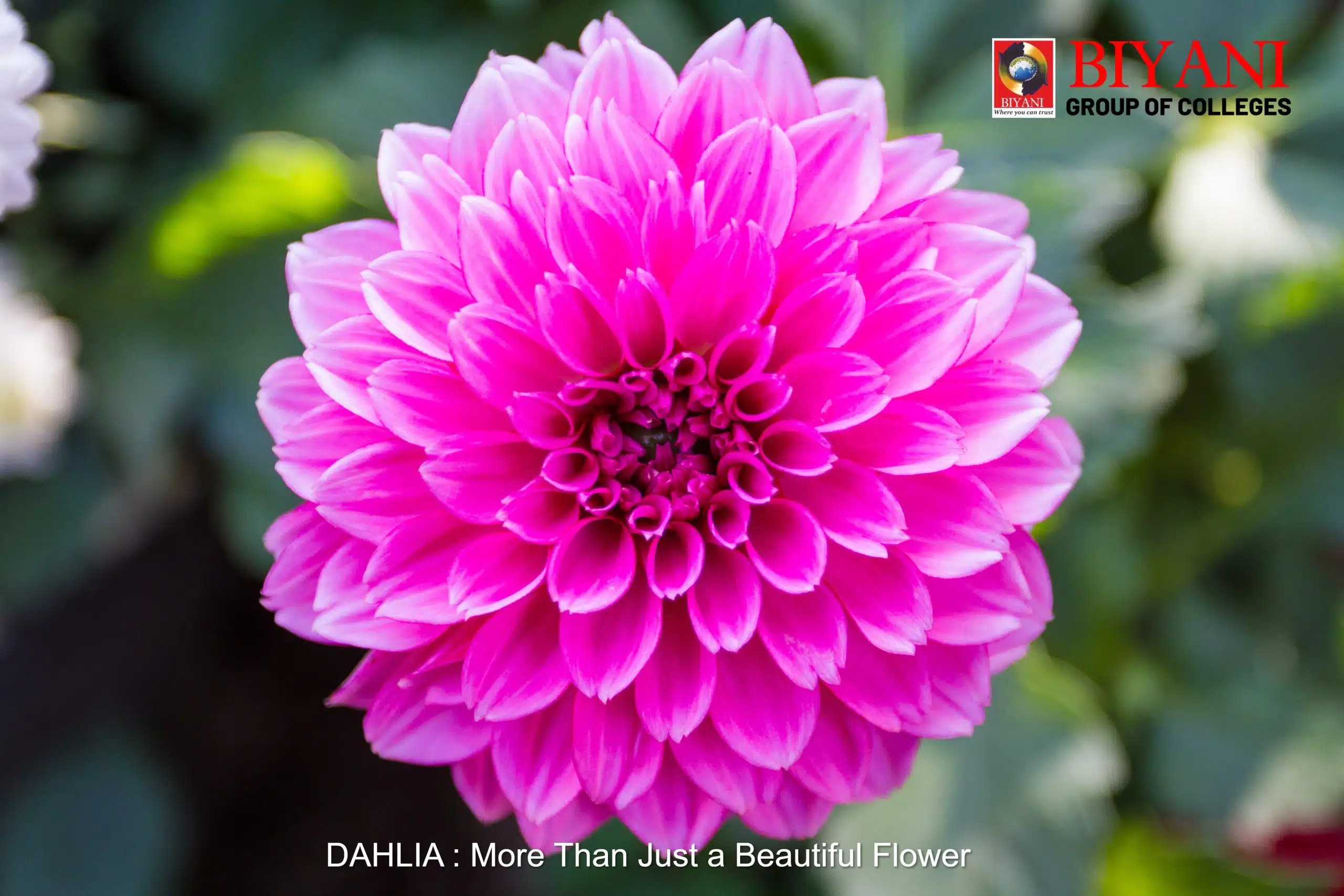Dahlias are celebrated for their striking blooms, diverse colors, and extensive range of shapes and sizes—making them a favorite among gardeners and floral enthusiasts alike. This guide explores the fascinating world of dahlias, one of my personal favorites, and delves into their botanical characteristics, cultivation requirements, care tips, and versatile uses.
If you’re someone who enjoys learning about nature and plants, just like students at bsc college in jaipur explore the wonders of technology and science, this article will deepen your appreciation for one of the most stunning flowers in the world.
 DAHLIA More Than Just a Beautiful Flower
DAHLIA More Than Just a Beautiful Flower
Plant Profile
- Botanical Name: Dahlia spp.
- Common Name: Dahlia
- Family: Asteraceae
- Origin: Indigenous to Mexico and Central America
Description
Dahlias are herbaceous perennials known for their magnificent, showy flowers that come in a wide array of colors, shapes, and sizes. Their blooms can range from small, single flowers to large, dinner-plate-sized blossoms. The petals may be rounded or pointed, while the plant’s lush dark-green foliage provides an elegant contrast to the vivid colors of its flowers.
Planting Guide
- Planting Time: Sow dahlia tubers in spring after the last frost, once the soil temperature reaches around 60°F (15°C).
- Planting Method: Dig a hole slightly larger than the tuber, place it horizontally with the eye facing upwards, cover it with soil, and water thoroughly. Space plants 1–3 feet apart depending on the mature size of the variety.
Flowering Season
Dahlias typically bloom from mid-summer until the first frost, with their peak flowering period in late summer and early autumn. These flowers appear in a breathtaking range of colors—white, yellow, orange, pink, red, and purple—with unique shades and patterns that make each bloom distinct.
Uses of Dahlias
Ornamental
Dahlias are prized for their decorative charm and are often grown in flower beds, borders, containers, and cutting gardens. They make excellent cut flowers, perfect for bouquets and floral arrangements.
Medicinal
Though not traditionally used in medicine, some dahlia species are believed to possess potential medicinal properties worthy of further study.
Culinary
Yes, dahlias are edible! Their petals can be used to garnish salads, desserts, and even cocktails, adding both flavor and beauty to dishes.
Fascinating Facts About Dahlias
- Dahlias are named in honor of Anders Dahl, a Swedish botanist who contributed to their classification in the 18th century.
- They are the national flower of Mexico and are celebrated during the Dia de la Dahlia (Dahlia Day) festival.
- There are more than 42 species and thousands of cultivars, offering endless diversity in color, shape, and form.
- The Aztecs originally cultivated dahlias for their edible tubers, which were roasted and eaten.
- Some varieties, known as dinner-plate dahlias, can grow up to 12 inches (30 cm) across!
- They attract bees, butterflies, and hummingbirds, making them excellent for pollinator-friendly gardens.
- Dahlia tubers contain compounds that may have anti-inflammatory and antioxidant properties.
- Through selective breeding, dahlias now display countless hybrid varieties admired worldwide.
- In the Victorian language of flowers, dahlias symbolize dignity, elegance, and inner strength.
- Their captivating colors and patterns have inspired artists, poets, and gardeners for centuries.
Conclusion
Dahlias are named in honor of the Swedish botanist Anders Dahl, who significantly contributed to the classification and cataloging of these plants during the 18th century. Dahlias hold the title of the national flower of Mexico and are honored at the annual Dia de la Dahlia (Dahlia Day) festival in the country. There exist over 42 distinct species of dahlias, alongside thousands of cultivars and varieties developed for their unique colors, shapes, and characteristics. Originally, the Aztecs cultivated dahlias for their edible tubers, which were roasted and consumed as a food source. Certain dahlia flowers can attain remarkable sizes, with dinner-plate dahlias measuring as much as 12 inches (30 cm) in diameter.
Dahlias are particularly favored by pollinators such as bees, butterflies, and hummingbirds, rendering them valuable additions to gardens that support wildlife. The tubers of specific dahlia species contain compounds that may possess medicinal properties, including anti-inflammatory and antioxidant effects. Dahlias boast a rich history of hybridization and selective breeding, leading to an astonishing variety of flower shapes, colors, and patterns available to contemporary gardeners. In the language of flowers during the Victorian era, dahlias represent dignity, elegance, and inner strength, making them popular selections for floral arrangements and bouquets imbued with symbolic significance. For centuries, dahlias have inspired artists, poets, and gardeners alike, with their vibrant colors and intricate forms frequently portrayed in paintings, literature, and garden designs.
Blog by:
Ms.Monika Saini
Assistant Professor,
Department of Science (Botany)
Biyani Girls College

